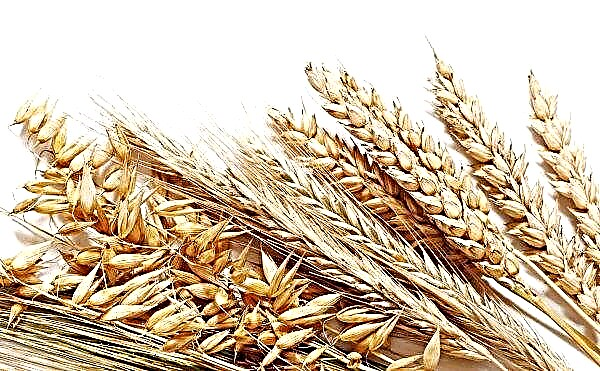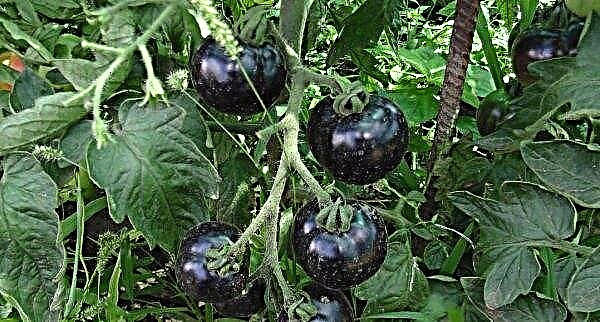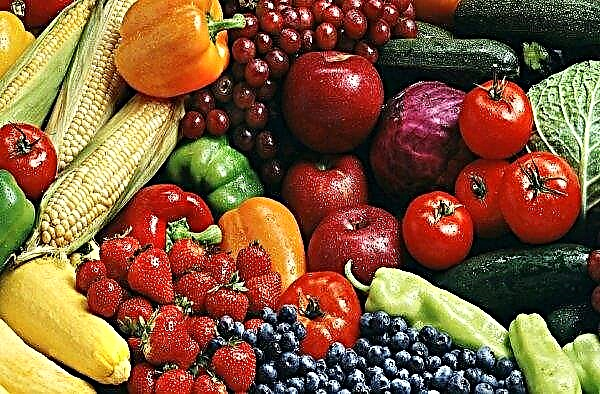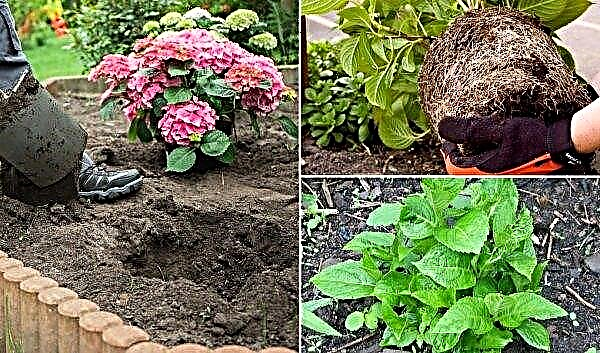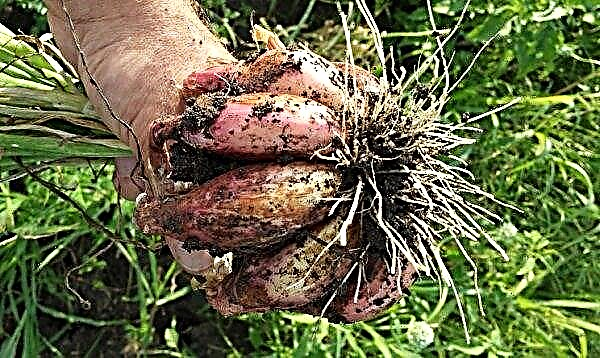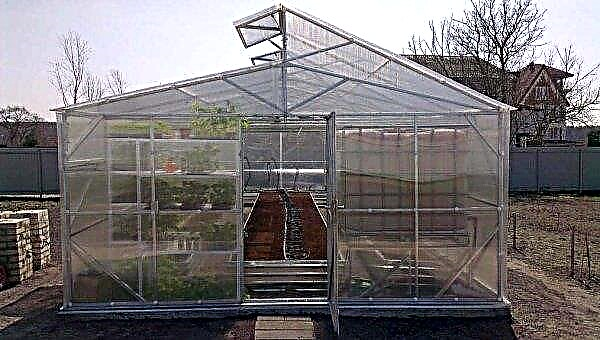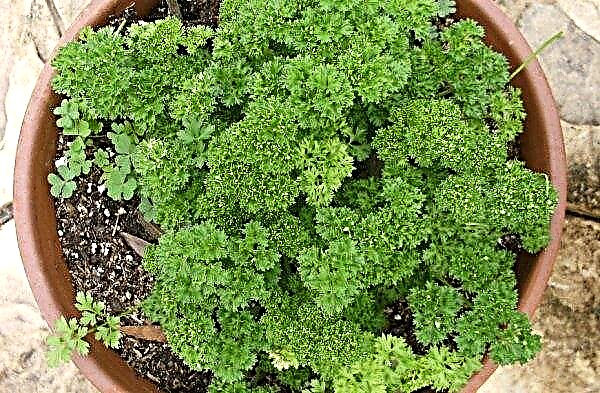Rabbit meat is a dietary type of meat. It is perfectly absorbed by the body, contains little fat and its value to the body is much higher than, for example, beef or pork. Therefore, rabbit husbandry aimed at obtaining meat is considered a very promising direction of farming. This article will discuss how profitable it is to raise rabbits for meat, how to properly maintain and feed animals so that the profit from their breeding is obvious.
The best meat breeds of rabbits
The targeted breeding of rabbits for meat begins with the selection of a specialized breed that is perfectly adapted to the local region. The content of meat breed is beneficial because:
- animals are able to grow and gain weight quickly;
- upon slaughter, a good indicator of pure meat is obtained;
- specialized breed is distinguished by high meat taste.
Did you know? Officially registered more than 200 breeds of rabbits around the world, but this figure is growing every year.
For breeding in the household and on the farm, it is recommended to use these breeds for meat:
- New Zealand Precocious breed. Young growth is capable of gaining 1 kg or more in weight in the first months of life. Puberty occurs at 4 months; a rabbit out of 7–10 rabbits. Live weight 4–5 kg, body length up to 50 cm, meat yield about 78% - the highest among all meat breeds.
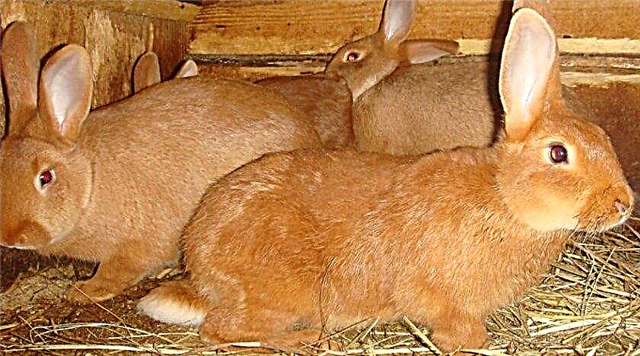
- Californian. The precocious breed with excellent immunity and adaptability. Puberty occurs at 4 months, with up to 12 rabbits. Live weight 4–5 kg, meat yield about 75%. An additional plus is a good quality skin.
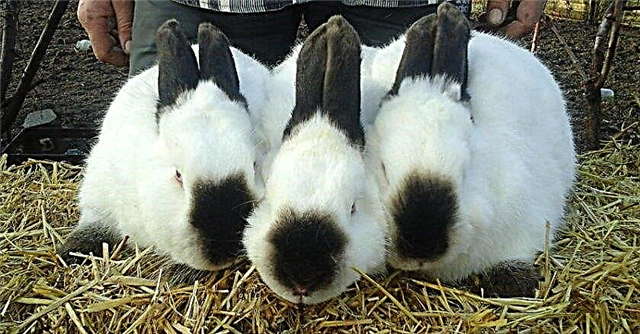
- White giant. Live weight 4.5–7 kg, body length up to 60 cm, meat yield 58%. At 3 months, gaining 2.6 kg. Okrol up to 10-15 rabbits, are fed by the female up to 9 weeks.

- Gray giant. Live weight 6–7 kg, body length up to 60 cm, meat yield 57%. At 3 months, gaining 2.5-3 kg. Puberty occurs at 5–6 months (late), has an okrol of up to 10 rabbits, and is fed by the female for 6–8 weeks.

- Soviet chinchilla. Live weight 5.5–6 kg, body length up to 60 cm, meat yield 60%. At 3 months, gaining 3–3.5 kg. Puberty occurs at 4 months, 8-10 rabbits are rabbit, rabbits have excellent milk yield. Good fur, unpretentious in maintenance.

- Flanders, or the Belgian giant. Live weight 9–11 kg, meat yield 55%. At 3 months, gaining about 3 kg. Puberty occurs at 6 months (late); The breed is 150 years old, is actively used for breeding.

How to fatten rabbits for meat?
Technologies and methods for feeding rabbits are based on their physiology. Animals show intensive growth in the first 120 days from the moment of birth. Rabbits have a good appetite, and correctly selected for breeding a rabbit is able to feed their own offspring only at the expense of milk up to 2-3 kg in just 6 weeks. At the stage of rearing young rabbits, it is recommended that the rabbit be maintained with concentrated feed, which should be about 50% of its diet during lactation. In winter, this dose can be increased up to 60%.
Hay for feeding during this period is best used from shoots of legumes, as they have high nutritional value and vitamin value. Rabbits begin to prepare for fattening gradually, accustoming them to "adult" feed in several stages. Initially, they are given small doses of light feed: they choose those that are rich in vitamins for healthy development. Compound feed is pre-crushed and mixed with crushed boiled potatoes. Bone meal is necessarily mixed with food and the salt balance is monitored so that the skeleton is correctly formed and develops in young animals. Fattening rabbits for meat does not mean that animals should be given as much food as possible. It is important not only the quantity, but also what to feed, and when to feed. For enhanced fattening rabbits put 3-4 weeks before the intended slaughter. In rabbit breeding, the fattening period is divided into 3 consecutive stages, during which a different diet for animals is determined.
Fattening rabbits for meat does not mean that animals should be given as much food as possible. It is important not only the quantity, but also what to feed, and when to feed. For enhanced fattening rabbits put 3-4 weeks before the intended slaughter. In rabbit breeding, the fattening period is divided into 3 consecutive stages, during which a different diet for animals is determined.
Duration of fattening by stages:
- 10x10x10 days - for young animals;
- 5x8-10x18 days - for adults.
Video: how to quickly feed a rabbit
The first stage is preparatory
The preparatory stage of fattening is based on feeds with maximum calorie content. The goal is achieved by gradually adding to the normal diet green and succulent feeds increased by 1.5 times the dose of feed. If the preparatory phase starts in the winter, then the volume of hay and branch feed is reduced. The most suitable products for this period are:
- concentrates - barley, oats, corn, bran, oilcake;
- juicy - beets, fodder cabbage, carrots;
- greens - herbs of the legume and other plant family, clover;
- roughage - high-quality hay.
Important! It is strictly forbidden to feed rabbits with wet grass and leaves of fresh white cabbage. These foods are in the animals ’diet, but the grass must be dried, and the cabbage leaf should be slightly kneaded.
The second stage is the main
The second stage of fattening can be called the main, because this time the diet is aimed at intensive deposition of fat. The period is complicated by the fact that the saturated daily menu of the rabbit may be excessive for the gastrointestinal tract of animals. Food should be enough for further weight gain, but a daily dose of fat should be respected. Hay and twig feed are reduced to a minimum. Vegetable root vegetables are removed from the diet, leaving only boiled potatoes, which are used for bundles in mixtures with bran, oilcake, mixed feed. Of the cereals, peas, barley, oats, and corn continue to be in the assortment. Flaxseed and hemp seeds, cereal cereals, which are prepared with the addition of whole milk, can become new components of the feed. Flaxseeds, branches of fruit trees can help restore gastric motility, if its work is disrupted.
Vegetable root vegetables are removed from the diet, leaving only boiled potatoes, which are used for bundles in mixtures with bran, oilcake, mixed feed. Of the cereals, peas, barley, oats, and corn continue to be in the assortment. Flaxseed and hemp seeds, cereal cereals, which are prepared with the addition of whole milk, can become new components of the feed. Flaxseeds, branches of fruit trees can help restore gastric motility, if its work is disrupted.
The third stage is the final
The final stage of feeding is based on the support of excellent appetite in rabbits and making sure that the animals eat the entire daily diet. The composition of the feed changes: hay and greens are minimized or eliminated altogether. The best menu should include boiled potatoes, which are mixed with mixed feed or bran, a mix of cereals and harvesting summer branches in small doses. Rabbit breeders also advise at this stage of fattening to use products that affect the increase in body fat: cabbage, swede, turnip, soy, peanuts.
Important! If you continue to give green food during the final stage of feeding rabbits before slaughter, the meat will be tough.
Seasonings (parsley, cumin, dill, chicory) can increase the appetite of animals, they are added in small amounts to the feed mixture, toasted seeds and acorns, or some salted water for drinking (a small pinch of table salt is diluted in 1 liter of water). If rabbits refuse to eat with all the stimulation of appetite, this means that you have successfully completed all stages of fattening for meat.
What conditions should be created for rabbits?
In order for the rabbits to fully develop, they need not only proper nutrition, but proper care and comfortable conditions. Rabbitry equipment involves the independent construction or purchase of cages. In this case, the requirements for the content of a particular breed are necessarily taken into account. Large adult rabbits need spacious cages. Their dimensions are larger than ordinary animals, therefore, an aviary for one rabbit should be an area of at least 1x1 meter. A rabbit with a brood is allocated an area 1.5 times larger.
On the other hand, enclosures should not be too spacious, because rabbits are quite mobile animals, and when fattening on meat, excessive activity can interfere. To save space, cells are mounted in 2 tiers; their height should be at least 60 cm. Rabbit giants have increased sex requirements for cages. The mesh floor, which is easy to maintain, is not suitable for them due to the fact that the paws of meat breeds are poor in fur. Large weight and small mesh support can lead to the development of pododermatitis (inflammatory process on the legs). To prevent the occurrence of the disease, the mesh is replaced with a trellised floor.
However, one layer of the floor is not enough, you should consider the lower pan in the structure where the manure will fall, so that the cells are kept clean and hygiene at all times. It is possible to provide for the organization of a bunker for collecting manure from several aviaries at once. Now you can buy a ready-made plastic floor, which is customized for various cells, much more practical when cleaning and warmer in the winter. To raise animals all year round, rabbitry is illuminated, the walls are qualitatively insulated or a heating system is installed so that in winter the temperature is at least +18 ° С. The room where rabbits will be kept is necessarily equipped with a ventilation system. Rabbits are twilight animals, so their food intake is more intense just outside the daytime. To organize animals with a short daylight hours, rabbitry windows tend to darken. During farm breeding and fattening, the daylight hours for adults are no more than 8–10 hours, and for young animals - 10–14. If rabbits are bred at home, and the population is not too large, the cages are cleaned, water and feed are dispensed manually.
The room where rabbits will be kept is necessarily equipped with a ventilation system. Rabbits are twilight animals, so their food intake is more intense just outside the daytime. To organize animals with a short daylight hours, rabbitry windows tend to darken. During farm breeding and fattening, the daylight hours for adults are no more than 8–10 hours, and for young animals - 10–14. If rabbits are bred at home, and the population is not too large, the cages are cleaned, water and feed are dispensed manually.
Did you know? Rabbits are provided with plentiful drink in the first place, otherwise they may eat okrol because of thirst.
When farming for meat, they try to automate the feeding processes as much as possible by installing hopper-type feeders and drinkers with a nipple distribution system. At the same time, it is worth worrying that the animals do not have a shortage of feed, and drinking water should come in a little salted to stimulate appetite. When breeding rabbits, it is important to observe the norms of nutrition and maintenance, but it is no less urgent that all animals are healthy. To this end, farmers conduct periodic veterinary examinations and compulsory vaccination. The vaccination time cannot be arbitrary. If slaughter is provided, then the last vaccination is carried out at least 30 days before it. If you follow the rules of feeding and monitor the livestock, then the conditions of detention will positively affect the taste of meat. This means that feeding rabbits for meat is equally beneficial and cost-effective for small private and extensive farms: with proper care of one rabbit, you can get up to 100 kg of meat per year.
The vaccination time cannot be arbitrary. If slaughter is provided, then the last vaccination is carried out at least 30 days before it. If you follow the rules of feeding and monitor the livestock, then the conditions of detention will positively affect the taste of meat. This means that feeding rabbits for meat is equally beneficial and cost-effective for small private and extensive farms: with proper care of one rabbit, you can get up to 100 kg of meat per year.







